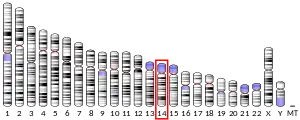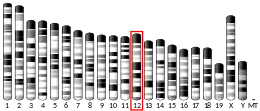| VRK1 | |||||||||||||||||||||||||||||||||||||||||||||||||||
|---|---|---|---|---|---|---|---|---|---|---|---|---|---|---|---|---|---|---|---|---|---|---|---|---|---|---|---|---|---|---|---|---|---|---|---|---|---|---|---|---|---|---|---|---|---|---|---|---|---|---|---|
| |||||||||||||||||||||||||||||||||||||||||||||||||||
| Identifiers | |||||||||||||||||||||||||||||||||||||||||||||||||||
| Aliases | VRK1, PCH1, PCH1A, vaccinia related kinase 1, VRK serine/threonine kinase 1 | ||||||||||||||||||||||||||||||||||||||||||||||||||
| External IDs | OMIM: 602168 MGI: 1261847 HomoloGene: 2541 GeneCards: VRK1 | ||||||||||||||||||||||||||||||||||||||||||||||||||
| |||||||||||||||||||||||||||||||||||||||||||||||||||
| |||||||||||||||||||||||||||||||||||||||||||||||||||
| |||||||||||||||||||||||||||||||||||||||||||||||||||
| |||||||||||||||||||||||||||||||||||||||||||||||||||
| |||||||||||||||||||||||||||||||||||||||||||||||||||
| Wikidata | |||||||||||||||||||||||||||||||||||||||||||||||||||
| |||||||||||||||||||||||||||||||||||||||||||||||||||

Serine/threonine-protein kinase VRK1 is an enzyme that in humans is encoded by the VRK1 gene.[5][6]
This gene encodes a member of the vaccinia-related kinase (VRK) family of serine/threonine protein kinases. This gene is widely expressed in human tissues and has increased expression in actively dividing cells, such as those in testis, thymus, fetal liver, and carcinomas. Its protein localizes to the nucleus and has been shown to promote the stability and nuclear accumulation of a transcriptionally active p53 molecule and, in vitro, to phosphorylate Thr18 of p53 and reduce p53 ubiquitination. This gene, therefore, may regulate cell proliferation. This protein also phosphorylates histone, casein, and the transcription factors ATF2 (activating transcription factor 2) and C-jun.[6]
References
- 1 2 3 GRCh38: Ensembl release 89: ENSG00000100749 - Ensembl, May 2017
- 1 2 3 GRCm38: Ensembl release 89: ENSMUSG00000021115 - Ensembl, May 2017
- ↑ "Human PubMed Reference:". National Center for Biotechnology Information, U.S. National Library of Medicine.
- ↑ "Mouse PubMed Reference:". National Center for Biotechnology Information, U.S. National Library of Medicine.
- ↑ Nezu J, Oku A, Jones MH, Shimane M (Feb 1998). "Identification of two novel human putative serine/threonine kinases, VRK1 and VRK2, with structural similarity to vaccinia virus B1R kinase". Genomics. 45 (2): 327–31. doi:10.1006/geno.1997.4938. PMID 9344656.
- 1 2 "Entrez Gene: VRK1 vaccinia related kinase 1".
Further reading
- Sugimoto J, Yamauchi T, Hatakeyama T, Isobe M (1999). "Isolation and mapping of a polymorphic CA repeat sequence at the human VRK1 locus". J. Hum. Genet. 44 (2): 133–4. doi:10.1007/s100380050127. PMID 10083742.
- Sayed M, Kim SO, Salh BS, et al. (2000). "Stress-induced activation of protein kinase CK2 by direct interaction with p38 mitogen-activated protein kinase". J. Biol. Chem. 275 (22): 16569–73. doi:10.1074/jbc.M000312200. PMID 10747897.
- Lopez-Borges S, Lazo PA (2000). "The human vaccinia-related kinase 1 (VRK1) phosphorylates threonine-18 within the mdm-2 binding site of the p53 tumour suppressor protein". Oncogene. 19 (32): 3656–64. doi:10.1038/sj.onc.1203709. PMID 10951572.
- Latonen L, Taya Y, Laiho M (2001). "UV-radiation induces dose-dependent regulation of p53 response and modulates p53-HDM2 interaction in human fibroblasts". Oncogene. 20 (46): 6784–93. doi:10.1038/sj.onc.1204883. PMID 11709713.
- Barcia R, López-Borges S, Vega FM, Lazo PA (2002). "Kinetic properties of p53 phosphorylation by the human vaccinia-related kinase 1". Arch. Biochem. Biophys. 399 (1): 1–5. doi:10.1006/abbi.2001.2746. PMID 11883897.
- Strausberg RL, Feingold EA, Grouse LH, et al. (2003). "Generation and initial analysis of more than 15,000 full-length human and mouse cDNA sequences". Proc. Natl. Acad. Sci. U.S.A. 99 (26): 16899–903. Bibcode:2002PNAS...9916899M. doi:10.1073/pnas.242603899. PMC 139241. PMID 12477932.
- Nichols RJ, Traktman P (2004). "Characterization of three paralogous members of the Mammalian vaccinia related kinase family". J. Biol. Chem. 279 (9): 7934–46. doi:10.1074/jbc.M310813200. PMID 14645249.
- Boyle KA, Traktman P (2004). "Members of a novel family of mammalian protein kinases complement the DNA-negative phenotype of a vaccinia virus ts mutant defective in the B1 kinase". J. Virol. 78 (4): 1992–2005. doi:10.1128/JVI.78.4.1992-2005.2004. PMC 369515. PMID 14747564.
- Sevilla A, Santos CR, Vega FM, Lazo PA (2004). "Human vaccinia-related kinase 1 (VRK1) activates the ATF2 transcriptional activity by novel phosphorylation on Thr-73 and Ser-62 and cooperates with JNK". J. Biol. Chem. 279 (26): 27458–65. doi:10.1074/jbc.M401009200. PMID 15105425.
- Sevilla A, Santos CR, Barcia R, et al. (2004). "c-Jun phosphorylation by the human vaccinia-related kinase 1 (VRK1) and its cooperation with the N-terminal kinase of c-Jun (JNK)" (PDF). Oncogene. 23 (55): 8950–8. doi:10.1038/sj.onc.1208015. PMID 15378002.
- Gerhard DS, Wagner L, Feingold EA, et al. (2004). "The status, quality, and expansion of the NIH full-length cDNA project: the Mammalian Gene Collection (MGC)". Genome Res. 14 (10B): 2121–7. doi:10.1101/gr.2596504. PMC 528928. PMID 15489334.
- Vega FM, Sevilla A, Lazo PA (2005). "p53 Stabilization and accumulation induced by human vaccinia-related kinase 1". Mol. Cell. Biol. 24 (23): 10366–80. doi:10.1128/MCB.24.23.10366-10380.2004. PMC 529057. PMID 15542844.
- Andersen JS, Lam YW, Leung AK, et al. (2005). "Nucleolar proteome dynamics". Nature. 433 (7021): 77–83. Bibcode:2005Natur.433...77A. doi:10.1038/nature03207. PMID 15635413. S2CID 4344740.
- Santos CR, Rodríguez-Pinilla M, Vega FM, et al. (2006). "VRK1 signaling pathway in the context of the proliferation phenotype in head and neck squamous cell carcinoma". Mol. Cancer Res. 4 (3): 177–85. doi:10.1158/1541-7786.MCR-05-0212. PMID 16547155.
- Valbuena A, Vega FM, Blanco S, Lazo PA (2006). "p53 downregulates its activating vaccinia-related kinase 1, forming a new autoregulatory loop". Mol. Cell. Biol. 26 (13): 4782–93. doi:10.1128/MCB.00069-06. PMC 1489172. PMID 16782868.
- Valbuena A, López-Sánchez I, Vega FM, et al. (2007). "Identification of a dominant epitope in human vaccinia-related kinase 1 (VRK1) and detection of different intracellular subpopulations". Arch. Biochem. Biophys. 465 (1): 219–26. doi:10.1016/j.abb.2007.06.005. PMID 17617371.




